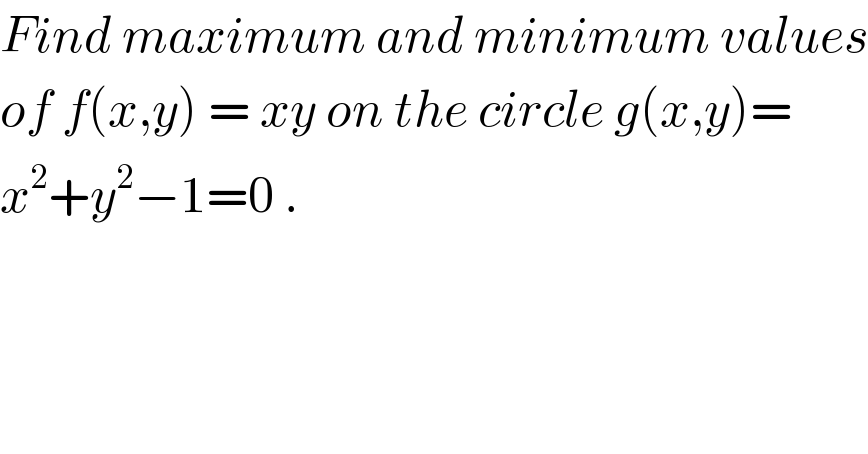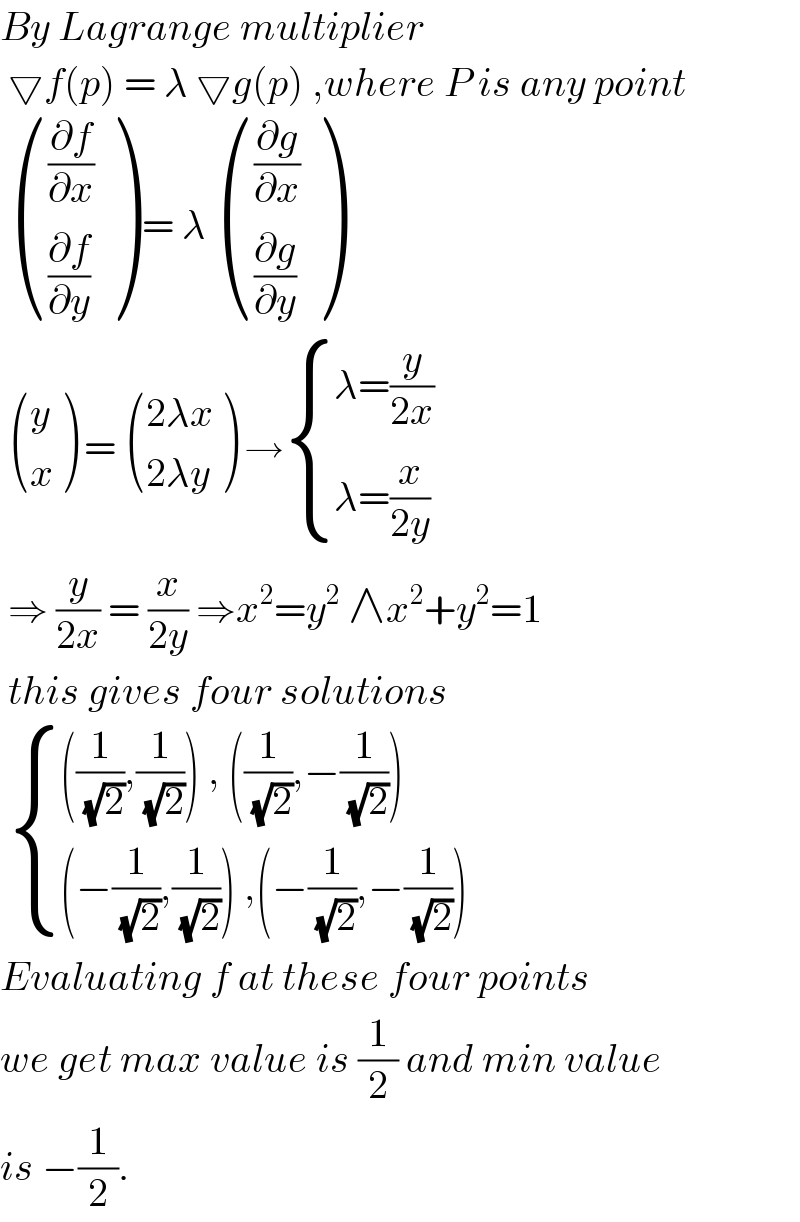
Question and Answers Forum
Question Number 122695 by liberty last updated on 19/Nov/20

Answered by john santu last updated on 19/Nov/20

Answered by mr W last updated on 19/Nov/20

| ||
Question and Answers Forum | ||
Question Number 122695 by liberty last updated on 19/Nov/20 | ||
 | ||
Answered by john santu last updated on 19/Nov/20 | ||
 | ||
| ||
Answered by mr W last updated on 19/Nov/20 | ||
 | ||
| ||